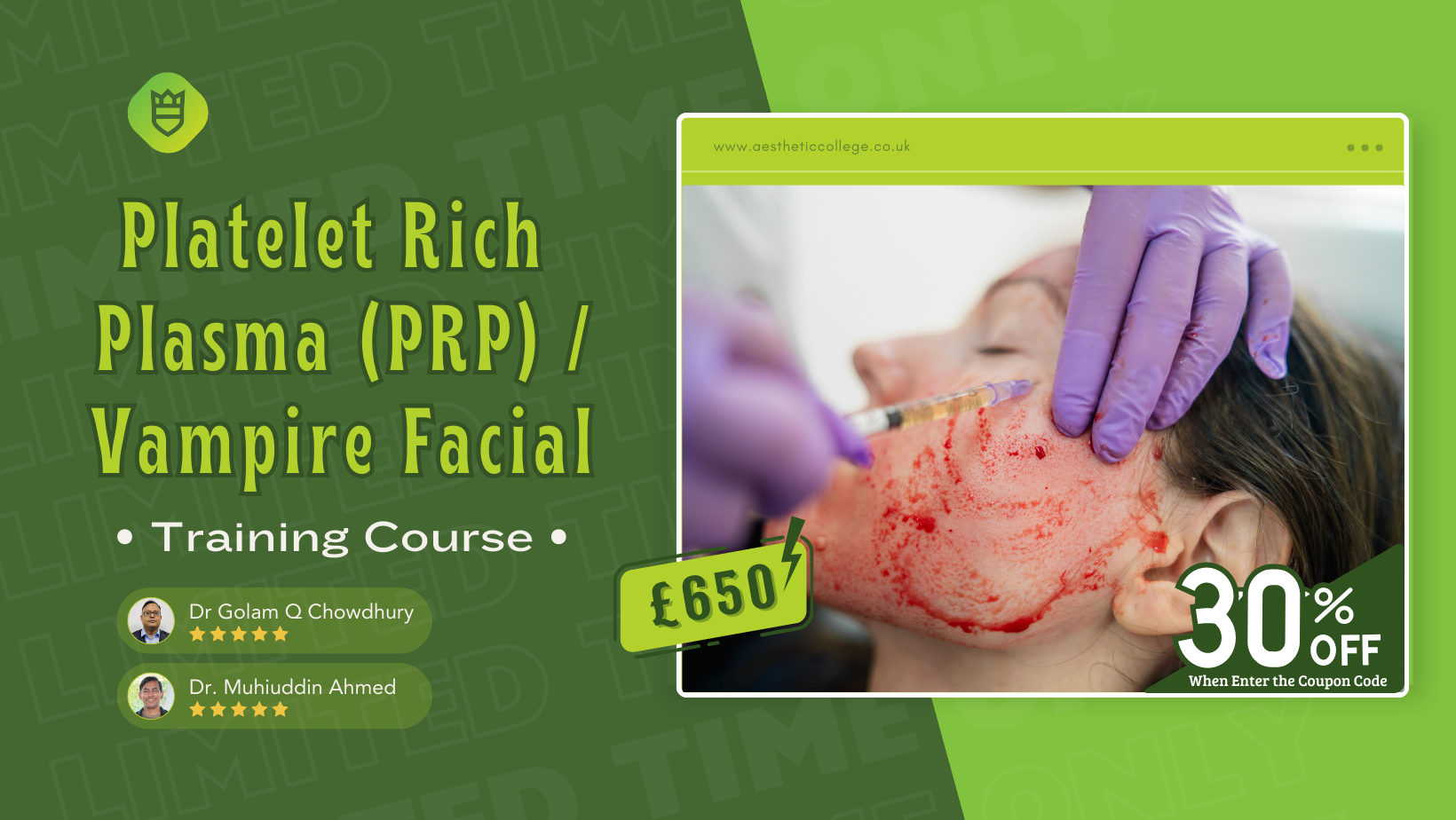PLATELET RICH PLASMA (PRP) / VAMPIRE FACIAL TRAINING COURSE

About Course
The human ageing process is complex. Platelet-rich plasma (PRP) can be used for skin regeneration and rejuvenation. With the ageing process, the epidermal layer changes less than the dermis, where the number of cells and their reproductive activity slows down. Consecutively, the levels of collagen, hyaluronic acid, and glycosaminoglycans decrease. Collagen accounts for as much as approximately 70% of the skin’s dry weight and plays a pivotal role in maintaining the skin’s structure. Collagen which exists in the following subtypes: Type I and Type III collagen are present in the highest amounts; type IV collagen, which is the main component of the lamina densa; type VII collagen, which is present at the dermal-epidermal interface; and Type V collagen which is found pericellularly.
PRP may be defined as a preparation of plasma generated by centrifugation, having a platelet concentration above the normal for venous blood. PRP not only contains platelets but also many other ingredients such as growth factors, chemokines, cytokines and other components (glucose, mineral ions, proteins such as cell adhesion molecules including fibrin, fibronectin, and vitronectin, and albumin). The activated thrombocytes, once injected, then release those factors. Platelets also carry on their surface a number of signalling molecules. Focusing on the growth factors of interest for PRP.
To understand the mode of action of PRP in aesthetics, it is helpful to revise the wound healing cascade. After an injury, platelets degranulate within 10 minutes to assist the formation of a clot, releasing growth factors into the local environment; 95% of the presynthesized existing platelet growth factors are present in the wound within the first hour: in this first phase of wound healing, inflammation, and clotting take place in order to obtain hemostasis (this clot mostly consists of thrombocytes). During the second phase, the exudation, various factors are released to attract cells that phagocytose debris and bacteria and release factors that initiate the third phase, the proliferative phase of wound healing. Here, fibroplasia and granulation tissue formation occur. Thanks to the vascular ingrowth caused by platelets, macrophages come into play just as the direct influence of platelets begins to subside. Platelets are the pacemakers for wound healing.
Student Ratings & Reviews


